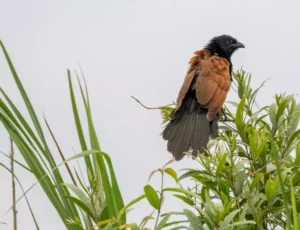GS3 – Environment

Context
On July 15, 2025, Kaziranga National Park published its inaugural Grassland Bird Survey Report, a milestone in conserving grassland-dependent avian species across the Brahmaputra floodplains.
Survey Highlights (March 18 – May 25, 2025)
- Species Identified: 43 grassland bird species across Kaziranga’s three wildlife divisions—Eastern Assam, Biswanath, and Nagaon.
Threatened Species Recorded
- Critically Endangered: Bengal Florican
- Endangered: Finn’s Weaver, Swamp Grass Babbler
- Vulnerable (6 species):
- Black-breasted Parrotbill
- Marsh Babbler
- Swamp Francolin
- Jerdon’s Babbler
- Slender-billed Babbler
- Bristled Grassbird
- Significant Discovery: A breeding colony of Finn’s Weaver—a master nest-builder and key ecological indicator—was discovered in the Kohora Range.
About Kaziranga National Park
- Location: Eastern Himalayan biodiversity hotspot; traversed by the Brahmaputra River.
- UNESCO Status: World Heritage Site.
- Bird Importance: Recognised as an Important Bird Area by BirdLife International.
- Vegetation: Includes alluvial grasslands, savanna woodlands, tropical moist deciduous, and semi-evergreen forests.
- Major Flora: Spear grass, elephant grass, common reed, cotton tree, elephant apple.
- Key Fauna (Big Five):
- One-Horned Rhinoceros (VU)
- Royal Bengal Tiger
- Asian Elephant
- Wild Water Buffalo (EN)
- Swamp Deer




